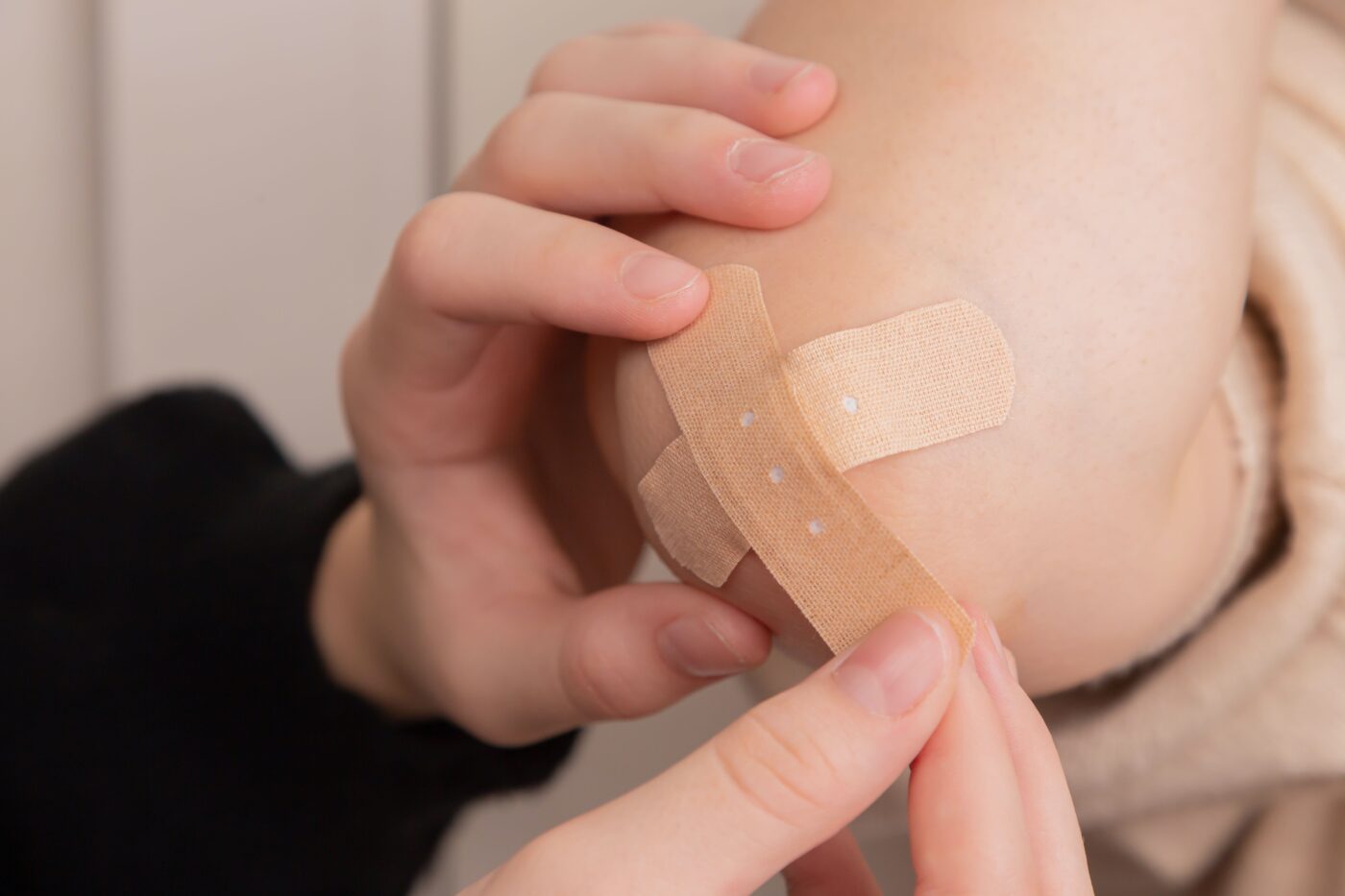No products added!
Abrasions are superficial skin damage that occurs when the skin rubs against a rough surface. They are usually caused by friction or abrasion against hard objects, such as asphalt, concrete or rough surfaces. Abrasions can vary in size and depth, but they usually only affect the top layer of the skin, called the epidermis.
When the skin rubs against a rough surface, the upper layers of the epidermis become damaged or flake off. This can lead to a painful red spot with an abrasion. The wound may be superficial with chapped skin, or small blood vessels may be damaged, causing some blood to be released.
Abrasions usually heal well and quickly, because the epidermis is able to repair itself. The wound will usually heal within a few days to a week, depending on the size and depth of the abrasion. It is important to keep an abrasion clean to prevent infection. Cleaning the wound with soap and water and applying a sterile bandage can help promote healing and protect the wound from bacteria.
If an abrasion is very painful, does not heal, becomes infected or if other complications arise, it is advisable to seek medical attention.

Complications that can occur with abrasions depend on the severity of the wound. are some possible complications that can occur:
It is important to properly clean, disinfect and care for abrasions to reduce the risk of complications. If you suffer from an abrasion and notice signs of infection or other worrying symptoms, see your doctor immediately for advice and treatment.
Abrasions usually heal within days to weeks, but there are several things you can do to speed up the healing process. First, you need to thoroughly clean and disinfect the wound. In addition, it is important to keep the area clean and dry. Also try moisturizing your skin with lotions or creams. If an infection occurs, using an antibacterial or antiseptic will help fight the infection. If pain or swelling persists, you may need to see a doctor for further treatment.
Large and deep abrasions can be a painful and unpleasant experience. They can also lead to infections if not treated properly. Fortunately, there are several ways to treat large and deep abrasions so you can get back on your feet quickly. The first step in treating a large or deep abrasion is to clean the wound. Use lukewarm water and mild soap to clean the wound. Avoid using alcohol or other strong cleansers as they can irritate the wound. If there is dirt or dust in the wound, use a soft, clean cloth to remove it. Next, it is important to disinfect the wound. Use an antiseptic ointment for this. Staudt Wound Ointment is a good example of this.
Apply the Staudt Wound Ointment to the wound and let it absorb for a few minutes. After disinfecting, it is important to cover the wound with a sterile bandage. This prevents infections and helps the wound heal.
If the wound is very deep, it may be necessary to use a special plaster to cover the wound. During the wound healing process it is important to keep it clean. Wash the wound daily with lukewarm water and mild soap. Avoid using alcohol or other strong cleaning agents.
If there is a bandage on the wound, change it regularly. If you suffer from pain or itching, it may help to take a painkiller.
Large and deep abrasions can be a painful experience, but with the right treatment they can heal quickly. By keeping the wound clean, disinfecting it, using a good wound ointment and then covering it with a sterile bandage, you can prevent infections and speed up healing. If you suffer from persistent pain or extreme itching, always consult your doctor.